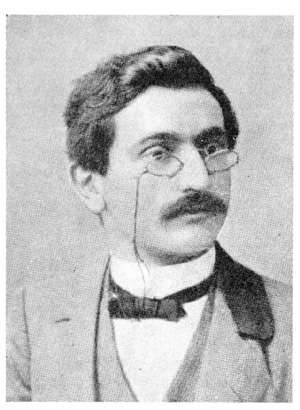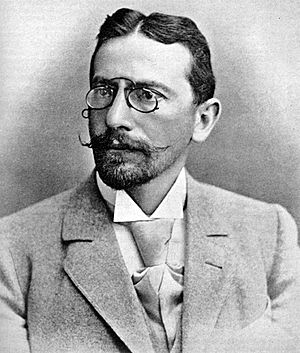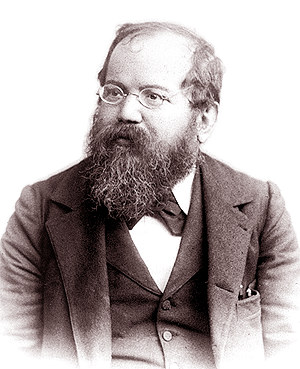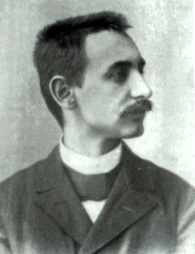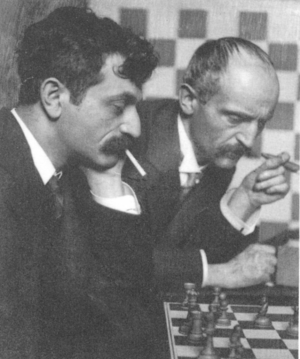Emanuel Lasker facts for kids
Quick facts for kids Emanuel Lasker |
|
|---|---|
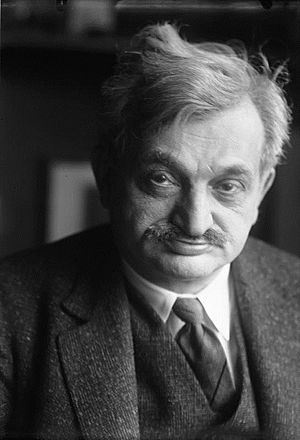 |
|
| Full name | Emanuel Lasker |
| Country | Germany |
| Born | December 24, 1868 Berlinchen, Prussia (now Barlinek, Poland) |
| Died | January 11, 1941 (aged 72) New York City, United States |
| World Champion | 1894–1921 |
Emanuel Lasker (born December 24, 1868 – died January 11, 1941) was a brilliant German chess player. He was also a mathematician and a philosopher. Lasker held the title of World Chess Champion for an amazing 27 years!
Many people consider him one of the strongest chess players of all time. He finally lost his championship title to Capablanca in 1921.
Lasker made sure he was paid well for playing in matches and tournaments. He had seen how the previous champion, Wilhelm Steinitz, struggled financially. Lasker wanted to avoid that same problem.
Lasker was also a very talented mathematician. His special university paper (called a Ph.D. thesis) is seen as a key part of modern algebra. He was also a top-notch contract bridge player. He wrote books about bridge and other games, including Go and a game he invented called Lasca.
Emanuel Lasker's Life and Chess Career
Early Life and Chess Beginnings (1868–1894)
Emanuel Lasker was the son of a Jewish cantor, a person who leads songs in a religious service. When he was eleven, he went to Berlin to study mathematics. He lived with his older brother, Berthold, who was eight years older and taught him how to play chess.
To earn extra money, Emanuel played chess and card games for small bets. He often played at a place called Café Kaiserhof.
In 1890, he came in third place in a tournament in Graz. Then, he shared first prize with his brother Berthold in a tournament in Berlin. In 1892, he won two tournaments in London. He won the second, tougher tournament without losing a single game!
At a tournament in New York in 1893, he won all thirteen games. This is one of the few times in chess history that a player has won every game in an important tournament.
Lasker was also very good at playing individual matches against other players. From 1889 to 1893, he won almost all his matches against top players. He even beat Joseph Henry Blackburne in 1892 without losing a game.
In 1892, Lasker started his first chess magazine, The London Chess Fortnightly. It was published for about a year. After the magazine ended, Lasker traveled to the USA, where he stayed for two years.
Lasker wanted to play a match against Siegbert Tarrasch, who had won three big international tournaments in a row. But Tarrasch proudly said no. He told Lasker that he should first win one or two major international events himself.
Becoming World Chess Champion (1894–1918)
Winning the World Title from Steinitz
After Tarrasch refused to play, Lasker challenged the current World Champion, Wilhelm Steinitz, for the title.
The match happened in 1894 in New York, Philadelphia, and Montreal. Steinitz had said he would definitely win, so it was a big surprise when Lasker won the first game. Steinitz won the second game, and the match was close for the first six games.
However, Lasker then won five games in a row (from the seventh to the eleventh). Steinitz asked for a week's break. When they started playing again, Steinitz seemed better and won two more games. But Lasker won the next two, and Steinitz couldn't catch up.
Lasker won the match clearly with ten wins, five losses, and four draws. This made Lasker the second official World Chess Champion. He proved his title again by beating Steinitz even more easily in their next match in 1896–1897.
Defending the Title Against Schlechter
Lasker continued to win many top tournaments. He won first prizes in St. Petersburg (1895–1896), Nuremberg (1896), London (1899), and Paris (1900).
Over time, two new strong players appeared: Akiba Rubinstein and Capablanca. Both seemed ready for a world championship match. But the chance went to another excellent player, Carl Schlechter.
Lasker played his World Chess Championship match against Schlechter in early 1910. Schlechter was a quiet player. He often drew his games (about 80% of them!). He was not known for being very aggressive.
The rules for this match are still debated because they were never officially published. Some people believe Schlechter agreed to very difficult conditions. For example, some say he needed to be two points ahead of Lasker to win the match.
The match was supposed to have 30 games. But there wasn't enough money (Lasker asked for a lot of money per game). So, the number of games was cut down to ten.
In the fifth game, Lasker had a big advantage but made a mistake and lost the game. This put Schlechter one point ahead. Before the last game, Schlechter was leading 5–4. In the tenth game, Schlechter tried hard to win and got a clear advantage. But he missed a winning move and ended up losing the game.
Because of this, the match ended in a draw (5–5). Lasker kept his title as World Champion.
In 1914, at a tournament in St. Petersburg, Lasker was behind by 1.5 points. But he managed to come back and finish ahead of the rising stars Capablanca and Alexander Alekhine.
Losing the Title to Capablanca (1921)
In January 1920, Lasker and José Raúl Capablanca agreed to play a World Championship match in 1921.
The match took place in March–April 1921. After four games that ended in draws, Lasker made a mistake in the fifth game and lost. Capablanca played very carefully and drew the next four games without taking any risks.
In the tenth game, Lasker, playing with the white pieces, couldn't create enough attacking chances. Capablanca got a better position and won. Capablanca also won the eleventh and fourteenth games. At this point, Lasker gave up the match.
Some people thought Lasker played unusually poorly in this match. However, another chess champion, Vladimir Kramnik, believed Lasker played quite well. He said the match was "even and fascinating" until Lasker's mistake in the last game. Kramnik also pointed out that Capablanca was twenty years younger and had played more recently in tournaments.
Later Years and Retirement (1922–1941)
After winning the New York 1924 chess tournament (beating Capablanca by 1.5 points) and coming in second at Moscow in 1925, Lasker mostly stopped playing serious chess.
In 1926, Lasker wrote a chess textbook in German, which he rewrote in English in 1927 as Lasker's Manual of Chess. He also wrote books about other mind games. These included Encyclopedia of games (1929) and Das verständige Kartenspiel (1929). His book Brettspiele der Völker ("Board games of the nations" 1931) had a section about Go and a game he invented in 1911 called Lasca. He also published Das Bridgespiel ("The Game of Bridge") in 1931. Lasker became an expert bridge player and even represented Germany in international events in the early 1930s.
In October 1928, Emanuel Lasker's brother Berthold passed away.
In 1933, Adolf Hitler began a campaign against Jewish people in Germany. They lost their property and their right to be citizens. Lasker and his wife Martha, who were both Jewish, left Germany that same year.
After staying in England, they were invited to live in the USSR (Soviet Union) in 1935 by Nikolai Krylenko. Krylenko was a government official who loved chess. In the USSR, Lasker gave up his German citizenship and became a Soviet citizen. He lived in Moscow and worked at Moscow's Institute for Mathematics. He also became a coach for the USSR national chess team.
Lasker returned to playing chess tournaments to earn some money. He finished fifth in Zürich in 1934. He came in third in Moscow in 1935, ahead of Capablanca and other masters. His performance in Moscow 1935, at age 66, was called "a biological miracle" because he played so well at his age.
Around the time the Laskers arrived in the USSR, Stalin began a period of great political changes and difficulties. In August 1937, Martha and Emanuel Lasker decided to leave the Soviet Union. They moved to the United States (first Chicago, then New York) in October 1937.
The next year, Lasker's supporter, Krylenko, faced serious problems under Stalin's government. Lasker tried to support himself by giving chess and bridge lessons and shows. He was too old for serious competitions now.
In 1940, he published his last book, The community of the future. In this book, he suggested ways to solve big problems like anti-Semitism (hatred towards Jewish people) and unemployment (not having a job). Lasker died from a kidney infection in New York on January 11, 1941, at 72 years old.
- The 7th game of the world championship match. Lasker (white) v Schlechter (black). [1] Some experts have called this "probably the most profound game ever played in a world championship match".
Images for kids
-
David Hilbert encouraged Lasker to obtain a PhD in mathematics.
See also
 In Spanish: Emanuel Lasker para niños
In Spanish: Emanuel Lasker para niños


